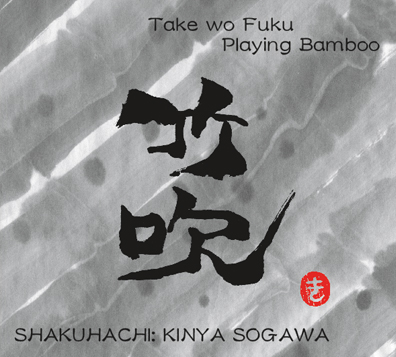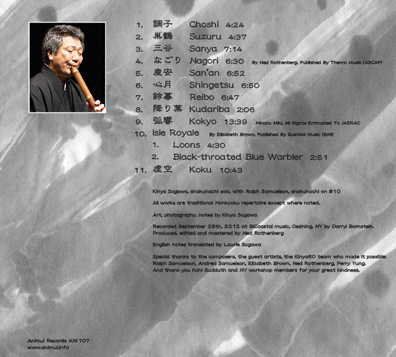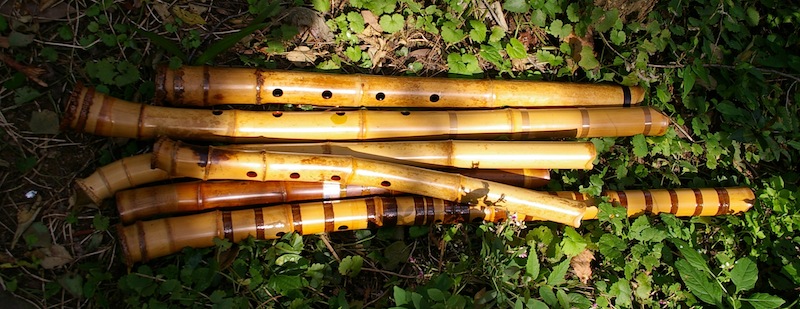
Shakuhachi: Kinya Sogawa
Take wo Fuku - Playing Bamboo
(Click on image to Purchase)
An Introduction to Kinya Sogawa's Playing Bamboo by Ned Rothenberg In my 30 year odyssey with the shakuhachi I've sometimes struggled with a certain disconnect in the community of its practitioners. The music and philosophy of the instrument flows from an ideal of ego-less exploration of the breath. However, by adorning themselves with purchased titles, weighty 'names', and assorted rankings a la the martial arts the shakuhachi scene can be a highly hyped, ego-driven, competitive place. Ambition may become a major reason players gain public exposure, rather than the musical depth of their art. Of course I am describing something that happens to some extent in all the arts, but the contrast to the underlying philosophy of the instrument makes it somehow more troubling.
From Kinya's notes to the cd:
KINYA SOGAWA is one of the most outstanding shakuhachi performers in Japan today, and is also one of Japan's finest shakuhachi makers. As both a brilliant musician and craftsman, he is a rare gem within the shakuhachi world. In the years before World War II, the best shakuhachi players were also the best shakuhachi makers, but since the latter 20th century these roles diverged as the demands required for each increased. In this sense, Kinya Sogawa represents a renaissance of the true spirit of the master shakuhachi artist.
As a performing artist, Mr. Sogawa is active in an extraordinarily wide range of traditional and contemporary music. While his core focus remains the solo repertoire of traditional pieces passed down by the komuso wandering monks of the Edo Period, he is also one of Japan's prominent performers of contemporary music. In the 1990s he was a leading member of the acclaimed ensemble Pro Musica Nipponia where he received an award for technical excellence. Since 1993 he has been a member of the acclaimed Orchestra Asia and is a soloist for the orchestra’s Japan Team. With both of these ensembles he has toured frequently in Europe and Asia. In addition, he is one of Japan's foremost shakuhachi performance and recording artists for the popular singing style known as enka. He also frequently performs and records for theater, television dramas, and commercials. His music for the opening sequence inYasunori Mitsuda's computer game, "Chrono Cross", was designated "best video game music of all time" by America’s Hardcore Gaming 101 in 2011.
Born in Kobe, Mr. Sogawa studied the shakuhachi with Katsuya Yokoyama, one of the 20th century giants of music in Japan, and he was apprenticed to master shakuhachi craftsman Chikusen Tamai. In addition to his professional performance and instrument making activities, he has been deeply engaged with the development of a curriculum in traditional music for the Japanese public school system.
|
|


